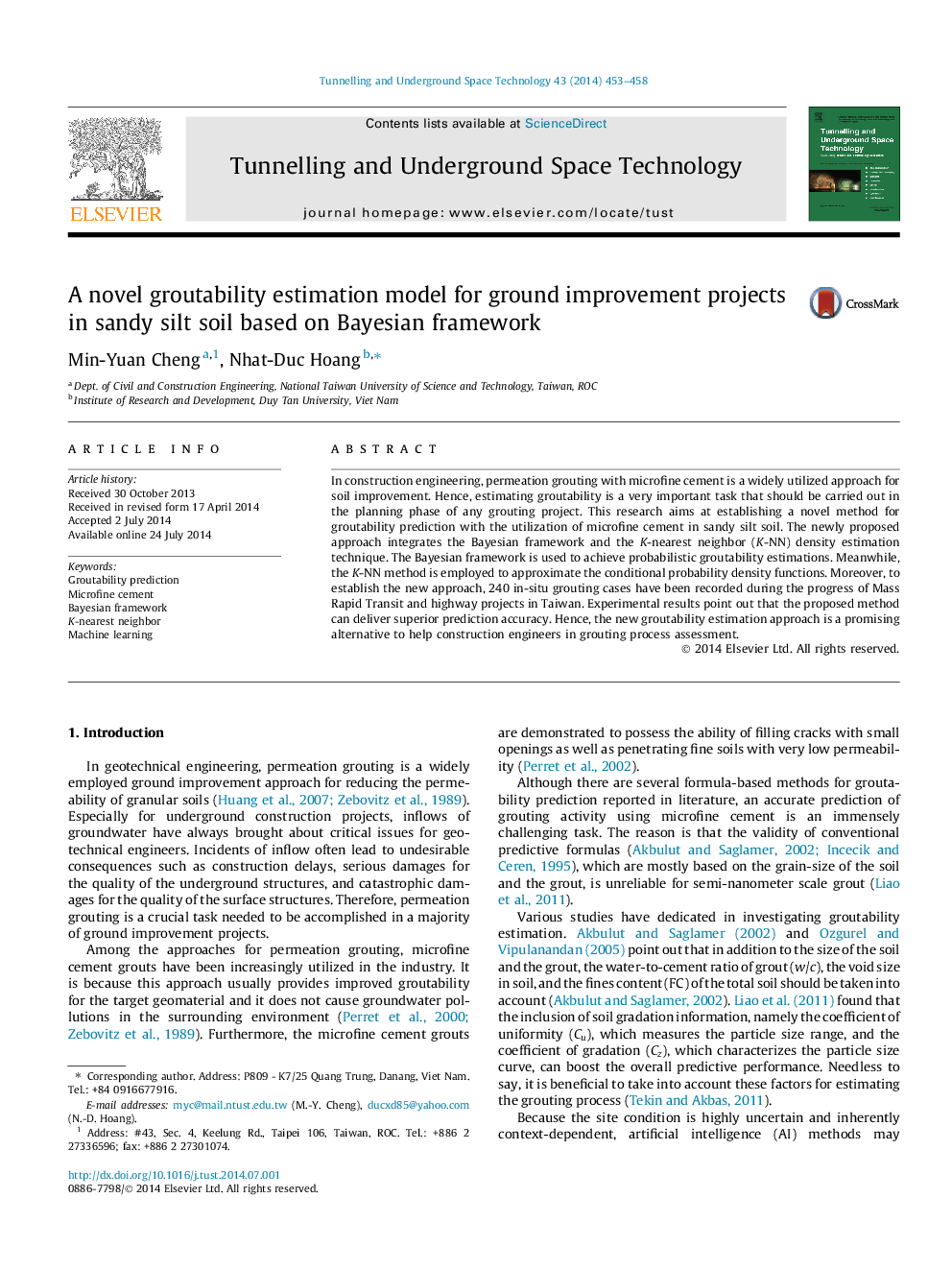| Article ID | Journal | Published Year | Pages | File Type |
|---|---|---|---|---|
| 311869 | Tunnelling and Underground Space Technology | 2014 | 6 Pages |
•This study puts forward a novel groutability prediction model.•The proposed method is developed based on the Bayesian framework.•The K-nearest neighbor algorithm is applied for density estimation.•240 In-situ cases were collected to construct and verify the model.
In construction engineering, permeation grouting with microfine cement is a widely utilized approach for soil improvement. Hence, estimating groutability is a very important task that should be carried out in the planning phase of any grouting project. This research aims at establishing a novel method for groutability prediction with the utilization of microfine cement in sandy silt soil. The newly proposed approach integrates the Bayesian framework and the K-nearest neighbor (K-NN) density estimation technique. The Bayesian framework is used to achieve probabilistic groutability estimations. Meanwhile, the K-NN method is employed to approximate the conditional probability density functions. Moreover, to establish the new approach, 240 in-situ grouting cases have been recorded during the progress of Mass Rapid Transit and highway projects in Taiwan. Experimental results point out that the proposed method can deliver superior prediction accuracy. Hence, the new groutability estimation approach is a promising alternative to help construction engineers in grouting process assessment.
Graphical abstractFigure optionsDownload full-size imageDownload as PowerPoint slide
